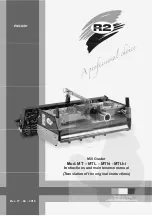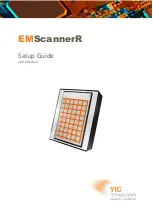
Preface
xxiv
EA IsoLink IRMS System for CNSOH Operating Manual
Thermo Scientific
Gases Precautions
Precaution for Helium
Helium is a nontoxic, odorless, colorless, nonflammable gas stored in cylinders at high pressure. It can
cause rapid suffocation when concentrations are sufficient to reduce oxygen levels below 19.5%. It is
lighter than air and may collect in high points or along ceilings.
Precaution for Oxygen
Oxygen is an odorless, colorless, nonflammable gas stored in cylinders at high pressure. It is an
oxidizing gas and vigorously accelerates combustion. Keep away from oils or grease. Rescue personnel
should be aware of the extreme fire hazards associated with oxygen-enriched (greater than 23%)
atmospheres.
Precaution for Hydrogen
Hydrogen is a colorless, odorless, highly flammable gas. The use of hydrogen requires the operator’s
strict attention and compliance with special precautions due to the hazards involved. Hydrogen is a
dangerous gas, particularly in an enclosed area when it reaches a concentration corresponding to its
lower explosion level (4% in volume). When mixed with air it can create an explosive mixture.
Precaution for Nitrogen
Liquid nitrogen is a colorless and odorless gas. It can cause rapid suffocation when concentrations are
sufficient to reduce oxygen levels below 19.5%. A Self Contained Breathing Apparatus (SCBA) may be
required. Oxygen concentrations must be monitored in the release area.
Precaution for Sulfur Dioxide
Sulfur dioxide is a colorless gas with an irritating odor. May be fatal if inhaled. Causes severe respiratory
tract, eye and skin burns. Use only with adequate ventilation.
Precaution for Carbon Dioxide
Carbon dioxide is a colorless, cryogenic liquid. At low concentrations, is odorless. At higher
concentrations carbon dioxide will have a sharp, acidic odor. At concentrations between 2 and 10%,
Carbon dioxide can cause nausea, dizziness, headache, mental confusion, increased blood pressure, and
increased respiratory rate. If the gas concentration reaches 10% or more, suffocation and death can
occur within minutes.
WARNING
Before using gases, carefully read the hazard indications and information reported in
the Material Safety Data Sheet (MSDS) supplied by the manufacturer referring to the CAS
(Chemical Abstract Service) number. It is the user’s responsibility to ensure compliance with all
l
ocal safety regulations for the use of gases.
















































